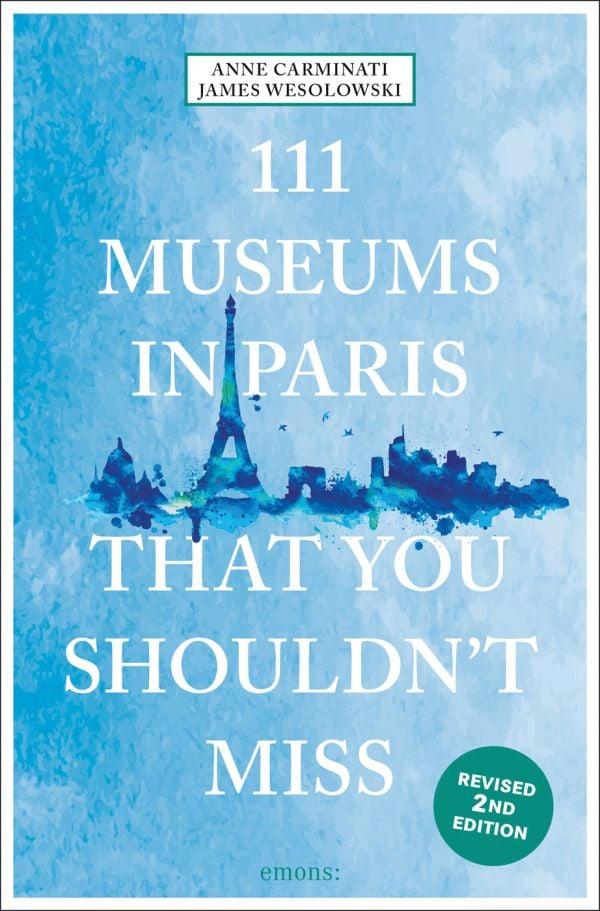

Antique Lighting Museum
Explore the beauty of lamplight
Some of the most compelling museums represent the expertise of passionate and knowledgeable private collectors. Certainly, owner Ara Kebapcioglu and his Antique Lighting Museum is a prime example. Housed in a diminutive storefront in the 5th arrondissement, the museum is filled floor-to-ceiling with desk, wall, and ceiling lamps, and it doubles as a showroom for collectors, decorators, and others interested in the unique and spectacular lamps designed in the age of kerosene, petrol, and oil.
The collection’s several hundred lamps serve as both décor and history lesson and illustrate the continuous advancements in lighting between the late 18th century and the start of the 20th century, and the ascendance of incandescent light. The lamps come in myriad styles that are decorative, whimsical, and practical. They reflect different needs and tastes, the type of light that was required from each lamp, and the available technology.
Call ahead to request a one-on-one tour of this fascinating collection. Mr. Kebapcioglu, a polyglot, world traveler, and all-around bon vivant, is an encyclopedia into the world of lighting. He will be happy to demonstrate the workings of several lamps and to assemble and light up a few of his favorites, such as the Quinquet-type oil lamp from Ramier, an earthenware petrol lamp with an ornate lampshade from Nouvelle Imagerie d’Epinal, or an early art nouveau filament bulb.
The process of lighting and maintaining an oil or gas lamp is fascinating to those who have only ever seen them in pictures and movies, and the resulting glow of the light within its housing is positively entrancing.
In recognition of the historical importance of the collection, the museum recently donated several lamps to the Musée Carnavalet. But anyone compelled by their beauty and luminosity is welcome to purchase and take home one of these unique objects.
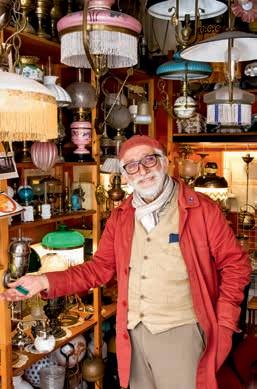

Address 4 rue Flatters, 75005 Paris, +33 (0)1 47 07 63 47, www.lumieredeloeil.com, Lumiara@aol.com | Getting there Metro to Les Gobelins (Line 7); bus 21, 83, 91 to Port Royal-Berthollet | Hours By appointment only | Tip Paris and its suburbs were at one time lit by gas streetlamps, and you can find the last working one, known as Léon, on the Sentier du Tir in Malakoff near the Porte de Vanves.
Balzac House
Discovering a universal author
Honoré de Balzac (1799 – 1850) lived in this house from 1840 to 1847, and it is here where he corrected The Human Comedy. You will see the author’s office, possessions, and portraits of him and his characters. He is one of the most translated authors in the world because his works provide answers to important societal questions relevant to his time and our own. Balzac is not just a 19th-century writer, but a writer for all time.
A workaholic, Balzac went to bed at 6pm and awoke at 1am to work. He took his daily nap from 8am to 9am, and then he returned to work until 3pm before taking a three hour respite. To say that coffee helped keep him awake would be an understatement, and, in fact, he died of complications from apparently drinking 50 cups of coffee or more per day. One room in the house describes his writing process. He wrote the initial draft in pen, erased a few things, and then sent it to the printer. The typographer would set the text one character at a time and send it to print. After receiving the first draft, Balzac would cross out a few lines, add annotations, modify the order, and double the text. The process would start over again. Some pages were rewritten 30 times.
Balzac’s working method is a good indication of how he became a literary giant. He was self-taught. After finishing a degree in law, he explained to his parents that the profession did not interest him, and he instead planned to become a writer. His father offered to support him for a year. During that year, Balzac isolated himself and wrote a play and some poems. A family friend, an academician, read the work and advised the aspiring writer, “My young friend, forget poetry and forget the theater as well.” Balzac took the man at his word and decided to write novels. His early efforts were quite heavyhanded, and it took him ten years of hard work before becoming a great writer.
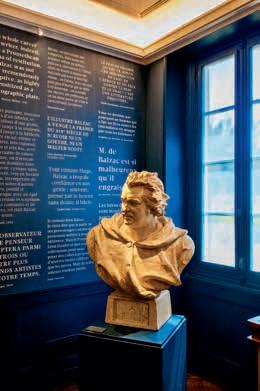

Address 47 rue Raynouard, 75016 Paris, +33 (0)1 55 74 41 80, www.maisondebalzac.paris.fr
Getting there Metro to Passy (Line 6), La Muette (Line 9); bus 32 to Place de Passy, 70 to les Vignes-Boulainvilliers, 72 to Lamballe Ankara | Hours Tue – Sun 10am – 6pm | Tip Go see the building at 13 and 19 Rue Raynouard designed by the architect Louis Duhayon in 1931. Duhayon also designed the Royal Monceau and the Plaza Athénée, in 1920 and 1936 respectively.
Cartier Foundation
A vision of living contemporary art
Founded in 1984, the Cartier Foundation for Contemporary Art is a unique example of corporate sponsorship in France. Installed in a remarkable glass building designed by the architect Jean Nouvel, its mission is to promote contemporary creation and facilitate the dissemination of knowledge by forming a significant art collection. Thanks to the foundation’s support, more than 2,000 works have been created by 500 artists from 50 different nations.
What sets the Cartier Foundation apart is its commitment to fostering dynamic exchanges with artists by commissioning works that serve as the bedrock of its sponsorship. Major names in contemporary art, as well as emerging artists, are exhibited here, and visitors can view pieces that have not been exhibited anywhere else. Exhibitions at the Cartier Foundation are curated to express a vision of living contemporary art, and you can be sure to encounter the unexpected.
All forms of contemporary creation are considered here, including design, fashion, painting, photography, and architecture. The foundation puts on four solo or collective exhibitions per year covering themes that touch on hot topics in today’s society. For example, a past exhibition was dedicated to the Yanomamis, an indigenous community in the Amazon, intending to raise awareness about threats to biodiversity. Sponsored by the foundation, Western artists, including Tony Oursler, Adriana Varejão, and Raymond Depardon, traveled to the Amazon to meet with the Yanomami people. The artists drew on their contact with this community to create works for the exhibition. The objective was to provide visibility to populations often excluded from the art world and share their unique vision of the world with the broader public. Additionally, the foundation provides opportunities for the public to engage with artists directly and attend captivating shows.
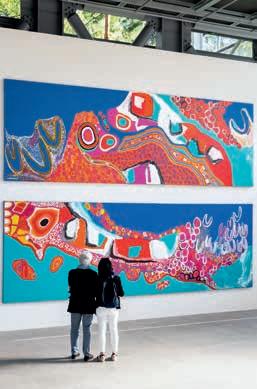

Address 261 boulevard Raspail, 75014 Paris, +33 (0)1 42 18 56 50, www.fondationcartier.com, info.reservation@fondation.cartier.com | Getting there Metro to Raspail (Lines 4, 6); bus 68 to Edgard Quinet, 38 to Saint Vincent de Paul | Hours Tue 11am – 10pm, Wed – Sun 11am – 8pm | Tip Take a stroll through the nearby Montparnasse cemetery where Charles Baudelaire and Guy de Maupassant are buried (3 Boulevard Edgar Quinet).
City of Science and Industry
STEM for the entire family
Here’s one for kids and their favorite grown-ups. The cavernous City of Science and Industry invites exploration with numerous permanent exhibits and a diverse selection of temporary expositions throughout the year. Whether your interest is technology, astronomy, transportation, or pure science, this is the type of museum that requires multiple visits just to scratch the surface.
The museum is organized on several levels starting with the Cité des Enfants with two age-based areas dedicated to very young children getting their first exposure to their place in the world and interacting with other children, as well as basic physical phenomena. The second area includes more advanced and autonomous activities for kids up to 12 years old.
Adults can really get involved by both learning new things and reacquainting themselves with scientific knowledge that they may have learned as children but forgotten after they left school. Families can watch a show in the classic planetarium, explore the brain and test their own capabilities, and learn about global warming and what can be done to reverse it in the future. On your next visit, learn about satellites and the universe, genetics, and multiple modes of transport, and then tour an old attack submarine.
The mathematics exhibit exemplifies the museum’s focus on learning by doing. Games and models illustrate concepts in geometry, movement, and numbers. Play a colorful round of three-dimensional tic-tac-toe. Predict the route balls will take through a Gaiton board. Dip a metal shape into soapy water to explore minimal surfaces. Learn about unpredictable Brownian movement. And use a chaoteurto follow the random trail of a pendulum suspended between three magnets. You’ll be amazed how much you can learn in a few hours of play.


Address 30 avenue Corentin-Cariou, 75019 Paris, www.cite-sciences.fr, infocontact@universcience.fr | Getting there Metro to Porte de la Villette (Line 7); tramway T3b to Porte de la Villette; bus 71, 139, 150, 152 to Porte de la Villette | Hours Tue – Sat 9:30am – 6pm, Sun 9:30am – 7pm | Tip For more scientific discovery, visit the temporary home of the Palais de la Découverte in Parc André-Citroën (186 rue Saint Charles, www.palais-decouverte.fr).
Eugène Delacroix Museum
The master artist’s private world
Eugène Delacroix (1798 – 1863) was a renowned Romanticist painter known today for works such as Liberty Leading the People, The Death of Sardanapalus, and The Lion Hunt. But to visit his house museum at Place Furstemberg is to understand the appeal and fascination with the idea of “the lone master artist” tucked away in their sunlit atelier in a beautiful corner of Paris, focusing intensely and working diligently on their next masterpiece.
Certainly, the secluded garden behind the museum, with its scattered seating, perimeter plantings, and postage stamp lawn, is one of the most serene gems of the city. Delacroix enjoyed exclusive access to it during his time there, and he grew a variety of flowers, among them hyacinths, tulips, ranunculus, narcissus, and roses. As Delacroix himself said, “My lodgings are decidedly charming…The sight of my little garden and the pleasant appearance of my studio always accord a feeling of pleasure.”
Delacroix took up residence in the apartment that is now the museum in 1857 to be closer to the Academy of Beaux-Arts and the Church of Saint Sulpice, where he painted several large chapel murals in the early 1860s. While the living space was modest, at least by today’s standards, the atelier was bright and spacious with cathedral-height ceilings. It would have been perfect for large-scale works or several simultaneous projects. In his day, it housed hundreds of paintings, studies, and sketches. Today, the atelier is a highlight of an artistic visit to the museum, with its striking red walls, period furniture, two maquettes of ceiling murals, and the easels and palettes he used in his work.
The museum’s collection itself is quite large, and Delacroix’s work is shown in a rotating series of temporary exhibits exploring topics such as his use of light and color, his exploration of mythological themes, his love of nature, or his fascination with Morocco.


Address 6 rue de Furstemberg, 75006 Paris, +33 (0)1 44 41 86 50, www.musee-delacroix.fr, contact.musee-delacroix@louvre.fr | Getting there Metro to Saint-Germain-des-Prés (Line 4), Mabillon (Line 10); bus 39, 95 to Saint-Germain-des-Prés | Hours Wed – Mon 9:30am – 5:30pm | Tip The famous Delacroix murals in the Chapel of the Holy Angels at the Church of Saint-Sulpice were wonderfully restored in 2015 (2 rue Palatine, www.paroissesaintsulpice.paris).
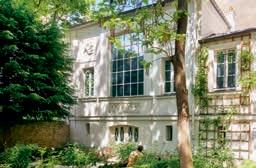
Fragonard Perfume Museum
From civet glands to modern perfumes
The name of Fragonard Perfumers, established in Grasse in 1926, honors the painter Jean-Honoré Fragonard. The museum was started by former director Jean-François Costa, a passionate collector of perfume vials, nécessaires, or travel cases, and other related artifacts.
The museum teaches about the perfume-making process and holds a delightful collection of objects. But why is there a taxidermy civet cat on display? Perhaps you didn’t know that the animal’s glandular secretions have been added to perfumes for centuries to help smooth and provide warmth to scents. Although largely replaced by synthetics, it’s use in perfume is still surprising.
The perfumer’s organ resembles the namesake instrument and gave the perfumer ready access to several hundred vials of raw materials. And a tremendous pot still illustrates how techniques for creating perfumes often resemble those for making spirits.
As for Mr. Costa’s collection, the earliest treasures from the 3rd millennium b.c. include an Egyptian makeup palette and a makeup bottle from central Asia. There are Grecian amphorae, decorated Roman vials, and a Sicilian bust from the 6th century b.c. A 16th-century vial is composed of rare Venetian glass. An 18th-century artisan produced a crystal bottle with an exquisitely carved ivory case. Marie Antoinette, a well-known perfume lover, is represented by glass and silver bottles in a Moroccan leather case. A First Empire nécessaireis filled with sewing and beauty products made of crystal and mother of pearl. A 1930s bottle by René Lalique contained the Fragonard fragrance Suprême, while another Lalique bottle holds Tabac. And Fragonard’s signature scent Belle de Nuitfilled a gold bottle in a red velvet-lined box.
After immersing yourself in perfume history, you’ll emerge into the Fragonard shop, where you’ll find an array of fragrant temptations.
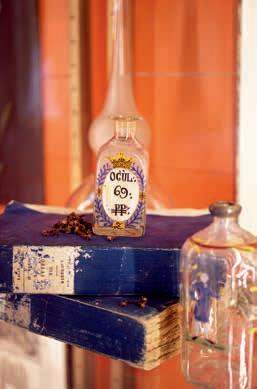

Address 9 rue Scribe, 75009 Paris, +33 (0)1 40 06 10 09, musee-parfum-paris.fragonard.com, tourisme@fragonard.com | Getting there Metro to Opéra (Lines 3, 7, 8), Madeleine (Lines 12, 14), Havre-Caumartin (Line 9), Saint-Lazare (Line 13); RER A to Auber, E to Haussmann Saint-Lazare; bus 20, 21, 27, 29, 32, 45, 52, 66, 68, 95 to Opéra | Hours Mon – Sat 9am – 5:30pm, Sun 9am – 5pm | Tip Around the corner from the museum is the Théatre de l’Athénée Louis-Jouvet, named after the famous French actor and director who died in his dressing room there in 1951 (7 rue Boudreau, www.athenee-theatre.com).
Jérôme Seydoux-Pathé Foundation
A journey through early filmmaking
When you record a 4K home video on your smartphone, it feels like a miraculous use of modern technology. That is, until you visit the Jérôme Seydoux-Pathé Foundation. The foundation’s permanent exhibit of cameras and projectors produced by the Pathé company in the first half of the 20th century will remind you that, although the equipment has improved vastly, the roots of personal moviemaking go back over a hundred years.
The Pathé brothers – Charles, Émile, Théophile, and Jacques – were early pioneers of music and movies. The foundation’s collection of 150 machines traces over 50 years of innovation, starting with their phonographs of the late 19th century. The Pathé company turned to movie equipment and filmmaking starting in 1896 with a focus on bringing the art of making movies to the public. The 1910s and 1920s were a period of tremendous innovation at the company, and the 1930s onward focused on making equipment ever more accessible to amateurs.
The collection includes many iconic machines, such as the 1896 35mm Cinématographe-type Lumière, the 9.5mm 1922 Pathé-Baby, the 1924 Cocorico, and the more modern post-war Joinville and Webo models. Be sure to crank the handle of the early film projector to get a real sense of how they operated. Each generation of camera equipment was more capable and more portable. Like modern printers cartridges, the chief money-maker for Pathé was the film used in its cameras.
The foundation pays homage to film and Pathé in an incredible venue. The thoroughly modern building by Renzo Piano has a cinema façade attributed to Auguste Rodin. Early silent films are presented in its theater, accompanied by piano students from the National Conservatory of Music. Saturday tours provide visitors with the opportunity to get close to the curved glass ceilings.
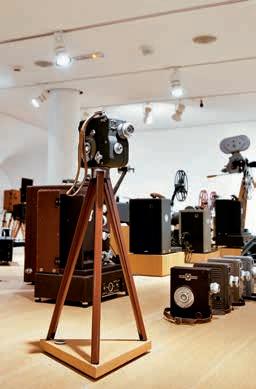
Address 73 avenue des Gobelins, 75013 Paris, +33 (0)1 83 79 18 96, fondationjeromeseydoux-pathe.com, contact@fondationpathe.com | Getting there Metro to Place d’Italie (Lines 5, 6), Les Gobelins (Line 7); bus 27, 47, 59, 83 to Banquier | Hours Tue & Fri 2 – 8:30pm, Wed & Thu 2 – 7pm, Sat 11:30am – 7pm | Tip Take the backstage Rex Studios tour at the iconic 1932 Art Deco movie palace Le Grand Rex (1 boulevard Poissonière, www.legrandrex.com).
Louis Vuitton Foundation
A hotspot for culture and art
An iconic presence in the French cultural landscape, the Louis Vuitton Foundation made its mark on the edge of the Bois de Boulogne in 2014. The building, a futuristic sailboat resting on a mirror of water and designed by the architect Frank Gehry, was commissioned by Bernard Arnault, CEO of the LVMH Group and an avid collector of contemporary art. This building alone is worth the visit. Head to the rooftop patios to enjoy views of the Bois de Boulogne, Paris, and La Défense.
The foundation houses a collection of artworks from 1960 to the present day. Some of these works engage in a dialogue with the architecture of the building. As you wander through the corridors near the pool, you will encounter mirrors created by artist Olafur Eliasson, playing with light and color. From various vantage points, both inside and outside the colonnade, multiple perspectives converge, echoing the waves suggested by the building’s design. The interplay of mirrors can be an interactive experience, inviting visitors to engage with the living architecture.
The permanent collection, unveiled through a series of events, is built upon its founder’s affirmed and desired artistic positions. It is organized around four lines: contemplative, pop, expressionist, music /sound. You can explore works by renowned artists such as Andy Warhol, Jean-Michel Basquiat, Gerhard Richter, Ellsworth Kelly, and Thomas Schütte.
In addition, the foundation organizes two temporary exhibitions every year. These often blockbuster events showcase modern and contemporary art. Past exhibitions have included “The Chtchoukine Collection” and “The New World of Charlotte Perriand.” The foundation supports emerging artists through the Open Space Program, offering them carte blanche to showcase their creativity each year. It also hosts concerts and recitals, inviting choreographers from all over the world.


Address 8 avenue du Mahatma Gandhi, 75116 Paris, +33 (0)1 40 69 96 00, www.fondationlouisvuitton.fr, contact@fondationlouisvuitton.fr | Getting there Metro to Les Sablons (Line 1); bus 73 to La Garenne-Colombes-Charlebourg | Hours See website for hours and events | Tip Ride all the rides at the Jardin d’Acclimatation, Paris’ only amusement park, in the Bois de Boulogne (www.jardin d’acclimatation.fr).
National Archives Museum
France’s memory bank
The National Archives Museum is located in the Hôtel de Soubise and Hôtel de Rohan. More than a museum, the space is a historic home that was built and inhabited by the noble Guise and RohanSoubise families from the 14th to the 18th centuries. The stately entrance is the largest of its kind in Paris, and today, public records are preserved here. This museum is a memory bank of French history, featuring priceless archives and opulent interiors.
Created during the French Revolution, the National Archives preserves materials from France’s various political regimes from the 7th century to the present day. In 1808, Napoleon Bonaparte selected the Hôtel de Soubise for the documents, books, and artifacts and initiated a construction program to accommodate the expanding collection. The Hôtel de Soubise only preserves papers from before the French Revolution, and the large rooms now host the National Archives Museum. Stroll through the building’s vast reception spaces to view major documents chronicling the history of France, including the Edict of Nantes signed by Henri IV in 1598, and Marie Antoinette’s final letter.
Exhibits rotate every four months to preserve these historical treasures. Admire sumptuously furnished spaces decorated in the Rococo style by Germain Boffrand, as well as the bedroom of the Princess of Soubise and a reconstruction of an archivist’s studio, including files, storage boxes, and shelves, and one of the archive rooms. The crown jewel of the museum is the “Iron Cabinet,” which contains all of France’s constitutions, alongside documents of high historical value, including the Declaration of the Rights of Man and of the Citizen. This space is only open to the public on special occasions, notably the Heritage Days, or the Journées du Patrimoine. A visit to this museum promises an exceptional experience for history enthusiasts.
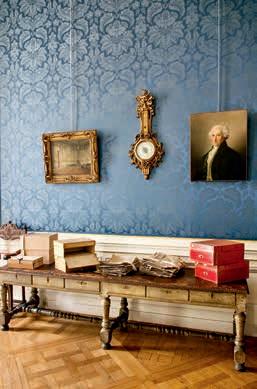

Address 60 rue des Francs Bourgeois, 75003 Paris, +33 (0)1 40 27 60 96, www.archivesnationales.culture.gouv.fr/fr/web/guest/musee, infomusee.archivesnationales@culture.gouv.fr | Getting there Metro to Hôtel de Ville (Line 1), Rambuteau (Line 11), Arts et Metiers (Line 3); bus 29, 75 to Archives-Haudriettes or Archives-Rambuteau | Hours Mon, Wed – Fri 10am – 5:30pm, Sat & Sun 2 – 5:30pm | Tip Take a stroll through the National Archives’ extraordinary grounds. There’s something here for everyone, from the classic 18th-century French garden to the well-tended orchard and the romantic 19th-century park.
Yves Saint Laurent Museum
The grand collection of an iconic designer
The Yves Saint Laurent Museum pays tribute to the creations of one of the most iconic couturiers of the 20th century. Yves Saint Laurent (1936 – 2008) is the only designer of his generation to have archived all his work starting the moment his fashion house was created, thanks to the Pierre Bergé-Yves Saint Laurent Foundation. Since the 1960s, the foundation has assembled more than 7,000 haute couture creations, which are exhibited in rotation.
The museum is situated within the historic premises of the renowned Yves Saint Laurent haute couture house in a private mansion from the Second Empire era. Saint Laurent worked there for nearly three decades from 1974 to 2002. The studio constitutes the heart of your visit as the museum’s true nerve center, where the designer meticulously conceived every creation with his team. The studio has been reconstructed faithfully: his glasses resting on his desk, his pencils, a photograph of Catherine Deneuve, and his drawings that appear as though they were sketched just moments ago. It feels as if Yves Saint Laurent could stride into his office at any moment.
The museum traces the designer’s career, including sketches made when he was only 15 years old. One room is dedicated to his creative process, with sketches, notebooks, and annotations, all essential elements of his upstream work before bringing his designs to life. The exhibition then transitions to his iconic haute couture collections, including the revolutionary women’s tuxedo, the timeless trench coat, the safari jacket, and the little black dress. An interactive room equipped with screens delves into the process from creation to the sale of each garment. In Yves Saint Laurent’s own words, “I would like my dresses and my drawings to be studied in a hundred years.” The museum is now ensuring the enduring legacy of his spectacular collections.


Address 5 avenue Marceau, 75116 Paris, +33 (0)1 44 31 64 00, museeyslparis.com, contact@museeyslparis.com | Getting there Metro to Alma-Marceau (Line 9); bus 42, 63, 72, 80, 92 to Alma-Marceau | Hours Tue & Wed, Fri – Sun 11am – 6pm, Thu 11am – 9pm | Tip You can continue your introduction to fashion by visiting La Galerie Dior (11 rue François Ier, www.galeriedior.com).

Anne Carminati is a free spirit. Free of boundaries and bias, eager to listen, to discover, and to create. A native Parisian, Anne’s greatest passions are art and design. She attended art schools in both Paris and New York. Now, she works as an interior designer for Maison Anne Carminati based in Paris and New York, recently launching a new high-end home accessories website. Anne’s taste combines a love of historic traditions and cultures with emerging art trends to bring energy, creativity, and new perspectives.

James Wesolowski fell in love with Paris when he first visited as a young man. After university, he lived and worked throughout the world and then settled in New York City, where he runs a technology consulting firm. James splits his time between New York and Paris, where he pursues interests in museums, French wine and cuisine, photography, and running marathons. His fantasy is to study art restoration and work on paintings in one of Paris’ many small churches.
